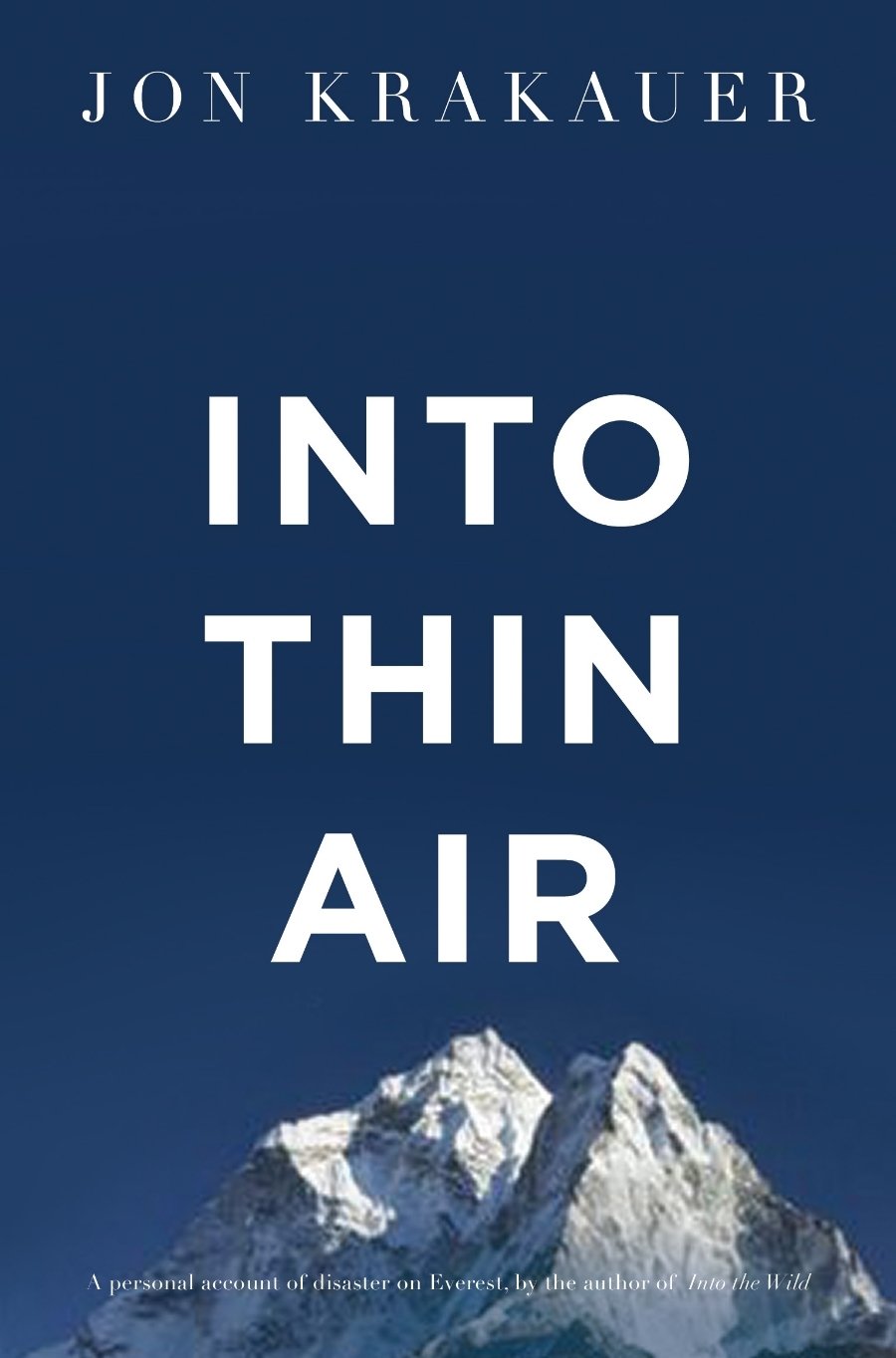Drawn from the Centre for Australian Army Leadership reading list, you’ll find this book a refreshing change if you want professional development but have had enough of the military perspective.
From the same author who wrote Into the Wild, this true story about climbing Mount Everest describes the worst single-season death toll in the peak’s history (at the time). It depicts the remarkable resilience of humans in the worst-case scenario when in 1996 a storm caught three expeditions on the exposed upper peaks during their so-called ‘Summit Day’.
Contracted by Outside Magazine to accompany the famous Everest guide Rob Hall on an ascent, the original remit of Krakauer’s article was to observe the effects of commercial guided tours on Everest. Democratising conquering the earth’s highest peak has led to human-traffic jams in key parts of the ascent, a significant uptick in trash polluting the once-pristine environment and has ‘ruined’ it for ‘proper climbers’ for whom Everest was the Holy Grail.
Beyond the play-by-play of the tragedy itself, pieced together by Krakauer’s memory and interviews with others on the mountain, the book also introduces you to the culture of mountain climbing and the history of successful and unsuccessful attempts to conquer Everest. Whether climbing Everest captures your imagination or not, or like me your ambition is to complete the Seven Summits, this extra context enhances the story. It’s an easy read which slips by effortlessly on audiobook (if you ignore the narrator’s godawful attempts at a Kiwi accent).
The book is a great example of gonzo journalism (an immersive approach to journalism which has become a synecdoche for Hunter S. Thompson) where the author isn’t an impartial observer, but an invested participant.
Written within months of the event itself, this book has been around for a while and is quite well-known, so I haven’t unearthed anything new. While this book is utterly gripping, especially given I didn’t know who lived and who died in the tragedy before starting, you might be wondering what military leaders can learn from a 24-year-old tragedy on a mountain so far from where we work and live.
When you join a commercial expedition to ascend Everest, you aren’t with a cadre of close, trusted friends who’ve trained to climb together, built standard operating procedures, and been bonded by experience. You ascend in extremely dangerous conditions with strangers with vastly different skill levels and motivations.
The Chief of Army’s cultural optimisation program Good Soldiering tells us that we can’t expect to deploy in the sections, platoons or companys in which we’ve been training, and have to be ready to form new teams at short notice in response to specific problems. That team might comprise an unfamiliar mix of different ranks, corps, services, militaries or non-uniformed people across ‘One Army’.
Like an Army team, because the actions of one climber can significantly impact others in the group Krakauer needed to establish trust and rapport with his team members between the hike from Lukla to Base Camp, and the climb from Base Camp to the peak. These relationships and the sense, or lack thereof, of obligation and responsibility for the fates of others in the team became crucial when disaster struck.
Furthermore, members of the three separate expeditions which were caught in the storm had to rapidly re-team to overcome hurricane-force winds, exposure, and severe altitude-induced hallucinations and impaired thinking.
Many of those who ‘stood-up’ as leaders during the tragedy didn’t hold appointed leadership positions (most were paying customers rather than guides), and yet were responsible for saving lives because they acted when others faced decision-paralysis and they choose to put team ahead of self.
Despite their best efforts, and the experience of the guides, eight people still died. It could have been much worse.
The tragedy is a good example of the ‘swiss cheese model’; where a series of incidents, which individually are undesirable but not catastrophic, align to trigger a disaster. Worse still, superimposed atop these simultaneous incidents is the ‘Everest Dilemma’, many elements of which ring true for the warfighting profession.
The dilemma, Krakauer explains, is that in order to reach the summit you have to ignore danger and the warnings of your fatigued and oxygen-deprived body. However, it is a fine line between the determined drive necessary to make it and the state of denial induced by ‘summit fever’.
Like military members, climbers are people who willingly choose a dangerous profession (or hobby) and are typically unaccustomed to failure or quitting. They may have paid up to $80,000 to be granted one shot at reaching their goal, but must elect to retreat back down the mountain- sometimes within hundreds of feet of the peak- because they reached the agreed turn-around time (which will have them safely back at camp before nightfall), or there’s too much snow on the peak, or the weather has become inclement.
Some readers may find themselves judging those who didn’t make this decision in 1996 and who died because of it, but such a decision required these climbers to direct their enormous discipline and willpower in a way which is almost out of character for them: away from the feverish allure of their goal rather than towards it. The ‘Everest Dilemma’ is that if you’re too driven, then you’re likely to die.
About the Author: Samuel J. Cox is the editor of Grounded Curiosity. Find him on Twitter.

